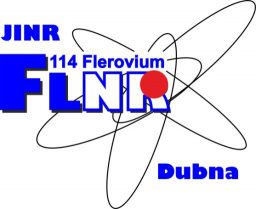Livermorium-288 was synthesized at FLNR JINR for the first time in the world
One event in the formation of a previously unknown Livermorium-288 isotope (element 116 of the Periodic Table) was recorded the other day at the FLNR SHE Factory. The unique atom was born as a result of chromium-54 and uranium-238 nuclei fusion during an experiment in preparations for the synthesis of Element 120. The new isotope lifetime turned out to be a bit less than one millisecond.

As commented by A.V.Karpov, Doctor of Sciences, FLNR Scientific Secretary, synthesis of new elements of the Table: the 119th and the 120th is currently the SHE Factory main task.
Synthesis of the 120th is considered the first and most promising. Superheavy elements from 114, flerovium to 118, oganesson were synthesized at FLNR JINR in the reactions with 48Ca beam and actinide targets from plutonium to californium. Californium is the heaviest substance which can be produced in sufficient quantities for a target.
Californium (the 98th element) if fused with calcium (the 20th element) produces already known 118th element of Mendeleev Table, oganesson. Therefore to obtain elements heavier than oganesson it’s necessary to use not calcium-48 projectiles but elements with a higher atomic numbers. So that to obtain element 120 the reaction of chromium-54 (the 24th element) with curium (the 96th element) target is considered.

But here scientists meet new challenges. It’s theoretically predicted and it already follows from some experiments that the probability of two nuclei fusion when we move from calcium-48 to the heavier beam: titanium, chromium, iron diminishes. This is compensated to some degree by the efficiency of SHE Factory experiments which multiple exceeds the previously used U400 complex.
In the second half of September an experiment was started to measure the nuclei synthesis cross section (the probability of formation) in the reaction of chromium-54 beam with uranium-238 target.
To obtain a high-intensity chromium beam is a very complicated task itself. At present the MIVOC (Metal Ions from Volatile Compounds) technique is used at FLNR to obtain titanium and chromium beams.
Synthesis of the new 288Lv isotope wasn’t the direct purpose of the experiment but turned out to be a pleasant complement for scientists. In the reaction with calcium and chromium the highest probability of isotope formation is after the evaporation of 3-4 neutrons. Now we have watched an event with the emission of 4 neutrons, alpha-decay of the new isotope into the already known flerovium-284 isotope, synthesized here before which in its turn underwent spontaneous fission. It additionally confirms the previously studied properties of flerovium.
“Observation of one event of livermorium formation even if it remains the only one for the time of the experiment, – is already a very good result. After the analysis of the results of this experiment there will be less uncertainty: the cross section will be possible to estimate and proceed to the experiment on element 120 with the open eyes”, – concluded Alexander Karpov.
